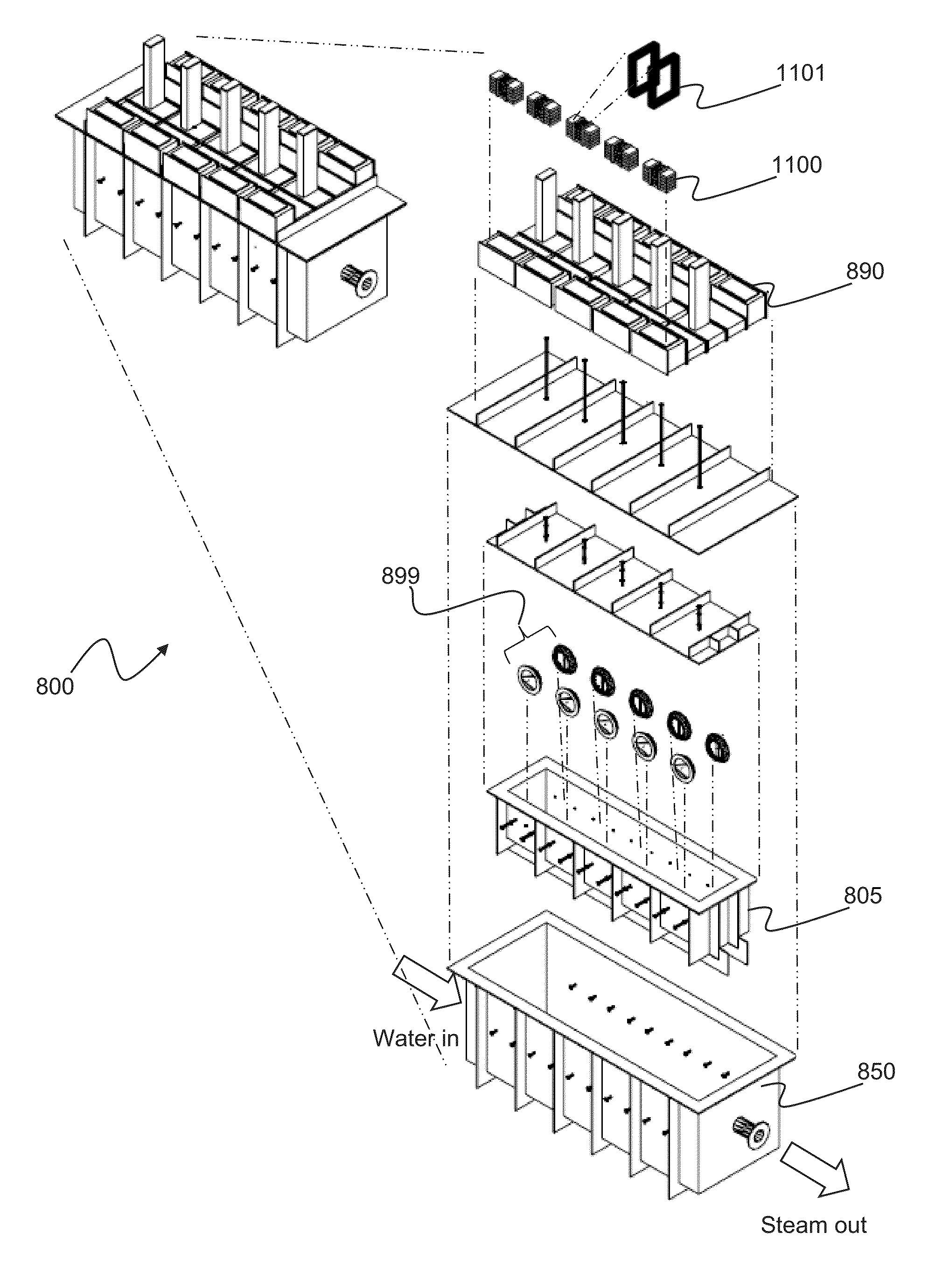Nuclear fusion using high energy charged particle convergence at a target cathode
a high energy charged particle and target cathode technology, applied in nuclear reactors, nuclear engineering, greenhouse gas reduction, etc., can solve the problems of unsustainable fusion process, uncompromising new energy architecture/paradigm, and inability to scale up to produce a power plant, etc., to achieve higher fusion rate and energy production, increase the amount of fusion energy produced, and the effect of increasing the reactant density
- Summary
- Abstract
- Description
- Claims
- Application Information
AI Technical Summary
Benefits of technology
Problems solved by technology
Method used
Image
Examples
example 1
Calculating a Fuel Flow Rate
[0075]The equation describing the energy balance for a representative 2 gigawatt (GW) power plant is as follows and assumes a 100% utilization of reactants:
17.6MeV2H(singlemolecule)+3H(singlemolecule)=2.8198×10-18megajoule(ref:1)2GWatt=(2.8198×10-18megajoule)*(x / sec)[2H(singlemolecule)+3H(singlemolecule)](x / sec)[2H(singlemolecule)+3H(singlemolecule)]=7.0926×1020 / sec(x / sec)[2.0141u2H+3.0160u3H]=7.0926×1020 / sec(x / sec)[3.3234×10-24gram2H+5.0082×10-24gram3H]=(2.3572milligram2H+3.5522milligram3H) / sec= [2.3572milligram2H(22.4liter / 2.0141gram2H / +3.5522milligram3H(22.4liter / 3.0160gram3H)] / sec=(.02622liter2H+.02638liter3H) / sec
[0076]Accordingly, for a 2 GW power plant, the fuel flow rate should be approximately =1572.9 sccm2H+1582.9 sccm3H!!
[0077]Where:[0078]x / sec=parameter representing the number of 2H+3H reactions required per second to generate 2 GWatt[0079]ex=10 to the x power[0080]MeV=Mega electron volt (energy)[0081]2H=Deuterium[0082]3H=Tritium[0083]GWatt=gig...
example 2
Calculating Relative Locations for the Reactant Injectors and Target Cathode
[0089]One of skill will appreciate that the location of the injectors for the two reactants is determined by their transport time to target. This interval is determined by their mass (resisting acceleration) and their ionization (producing force causing acceleration. The governing equation of rectilinear motion is:
s=½at2
[0090]Where:[0091]s=distance from reactor induction to target[0092]a=acceleration due to the unbalanced force of the ionized reactants in the electromagnetic field[0093]t=the time of transport from the site of induction to the target
[0094]The distance for the 2 reactants to the target can be the same, for example, due to the complimentary inverse relationship of mass to ionization—2 / 3 ratio for mass and 3 / 2 ratio for force due to relative ionization.
example 3
Calculating Target Cathode Size
[0095]One of skill will appreciate that the size of the target cathode should be related to the reactant flow for the reactor, the number of reaction nodes, the output of the reactor, and the size of the reactant nuclei. A configuration that offers a basis for establishing the physical reaction is a monolayer of reactant nuclei covering the faces of the electrode being impacted, recognizing that reactions adjacent to the target are anticipated either from same-side same-direction reactant collision or opposite-side opposite-direction reactant collision. This high density nuclear condition is unique to the teachings provided herein, and it produces a high reaction efficiency, as well as overcomes the inherent limitations in other unsatisfactory development paths at other facilities / programs.
[0096]The true sizes of the atomic and nuclear species under discussion are dependent upon Bose Einstein Condensate behavior of the ionized bosons dependent on local...
PUM
 Login to View More
Login to View More Abstract
Description
Claims
Application Information
 Login to View More
Login to View More - R&D
- Intellectual Property
- Life Sciences
- Materials
- Tech Scout
- Unparalleled Data Quality
- Higher Quality Content
- 60% Fewer Hallucinations
Browse by: Latest US Patents, China's latest patents, Technical Efficacy Thesaurus, Application Domain, Technology Topic, Popular Technical Reports.
© 2025 PatSnap. All rights reserved.Legal|Privacy policy|Modern Slavery Act Transparency Statement|Sitemap|About US| Contact US: help@patsnap.com



